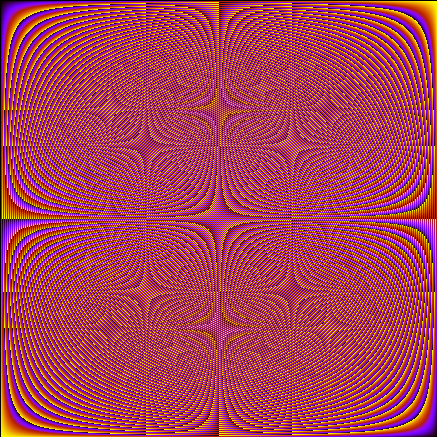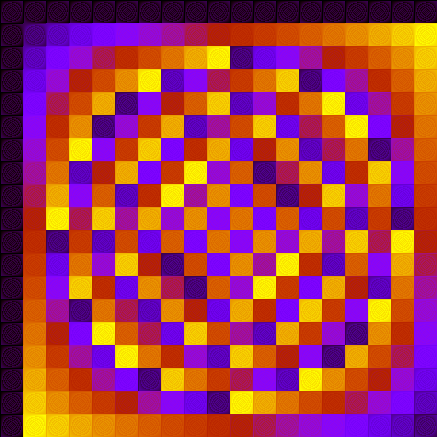Some time ago I’ve generated colored addition/multiplication tables in order to visualize group structure. My idea was to compare extension fields of same order with different reduction polynomials, and to compare elliptic curve groups with groups of integers modulo a prime (). However, as pointed out by an attentive reader, I’ve messed up claiming that the latter group is used by RSA. It is not, it’s used for e.g. DSA, while RSA uses a composite modulus: the product of two prime numbers.
So, how do and
compare?
Prime versus composite modulus
Recalling how I’ve generated the tables: I’ve sorted the elements by the default Sage order, and assigned a color for each element according to its position in the list. The element of the table is painted with the color assigned to the element that is the result of the multiplication of the i-th and j-th elements.
Here is the table for , for p = 509:
And here is the table for , for n = 23*19:
As you can see, there isn’t much difference, which is expected: the security of 1024-bit RSA is believed to be roughly the same as 1024-bit DSA, for example.
Chinese Remainder Theorem
As it is well known, it is possible to speed up RSA using the Chinese Remainder Theorem (CRT) if you know the factorization of . Of course, only the holder of the private key would know that, so only her can employ this optimization. The CRT works by mapping some
to the pair
, then doing your calculations (e.g. exponentiation) using the pair (adding or multiplicating each element indepently) and then mapping it back to
.
Let’s try to visualize the CRT: instead of sorting the elements of in ascending order, let’s sort using the pairs
:
That’s interesting. I have not enlarged the image, each large block is not uniform. Compare this to (this one is enlarged):
It’s the same structure! And if you squint your eyes on the image, you can see that each large block has some faint structure, which actually is the same as
. This shows that the CRT decomposes the original group in the two smaller subgroups
and
, which are faster to work with.




please reactivate the quivi project
How awesome!
This is animation that I was doing when I was 14/15 years old. I have no idea what the fuck I did, I was just playing with modulus and C# code.
https://kobibok.files.wordpress.com/2012/11/6tau.gif?w=300
https://www.mamayi.com/